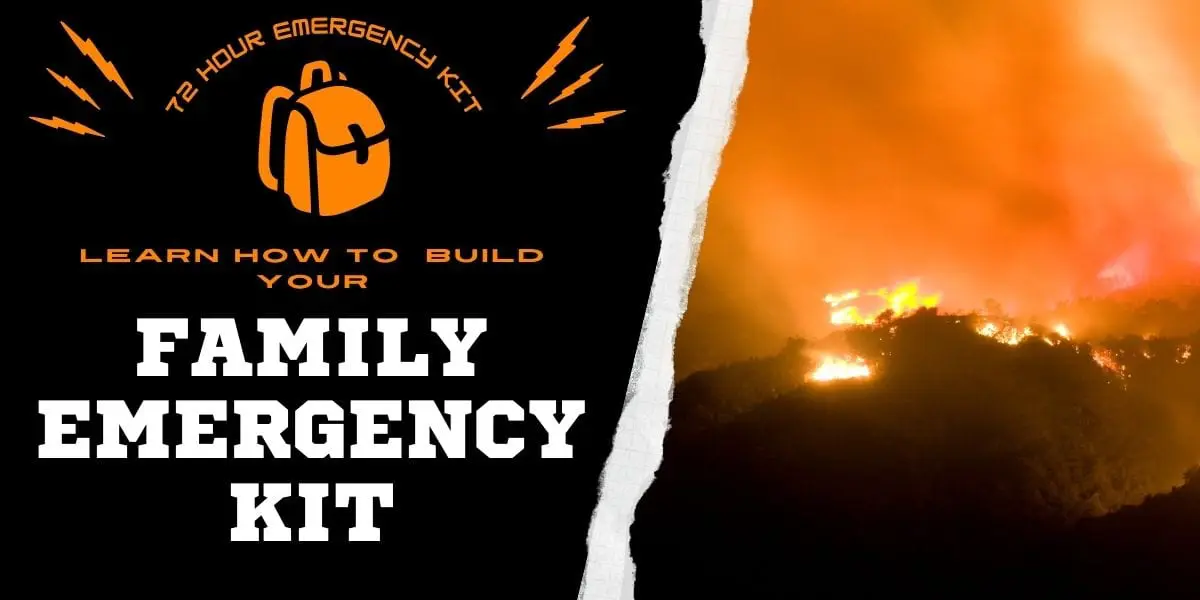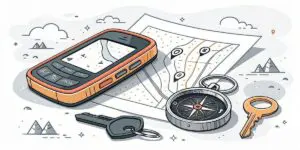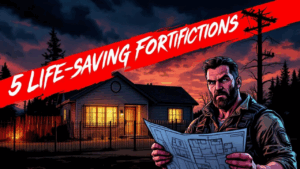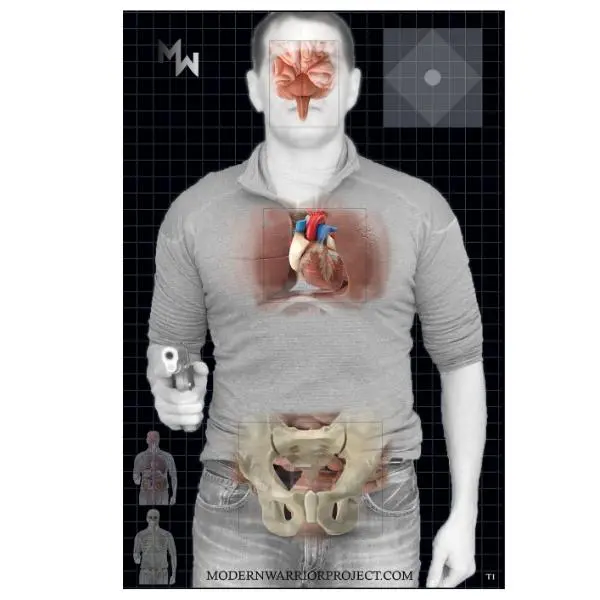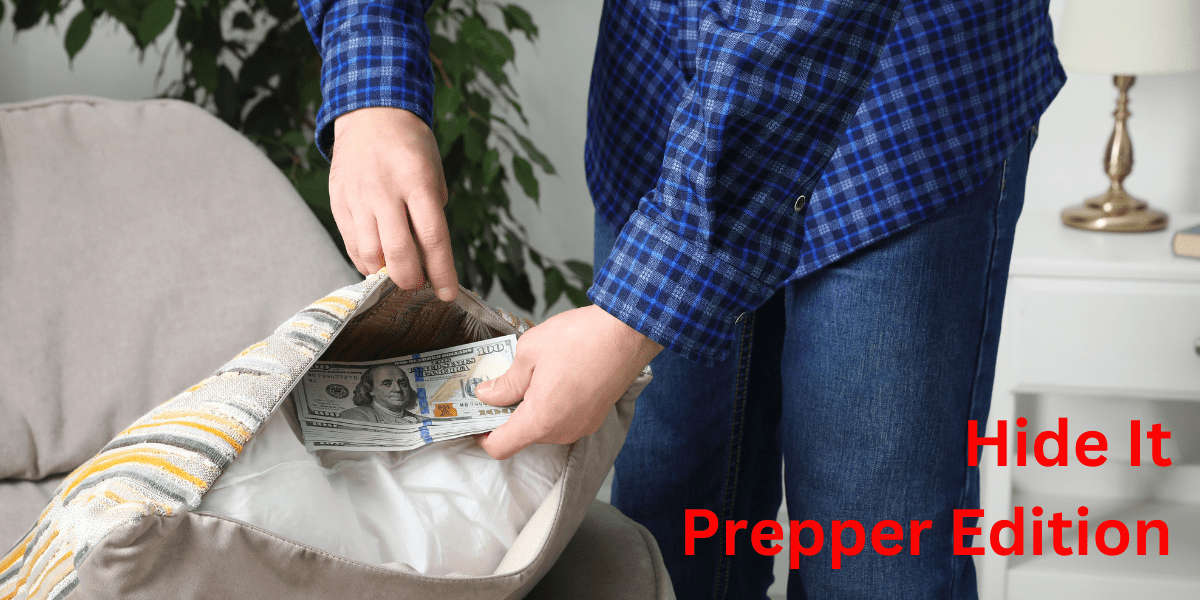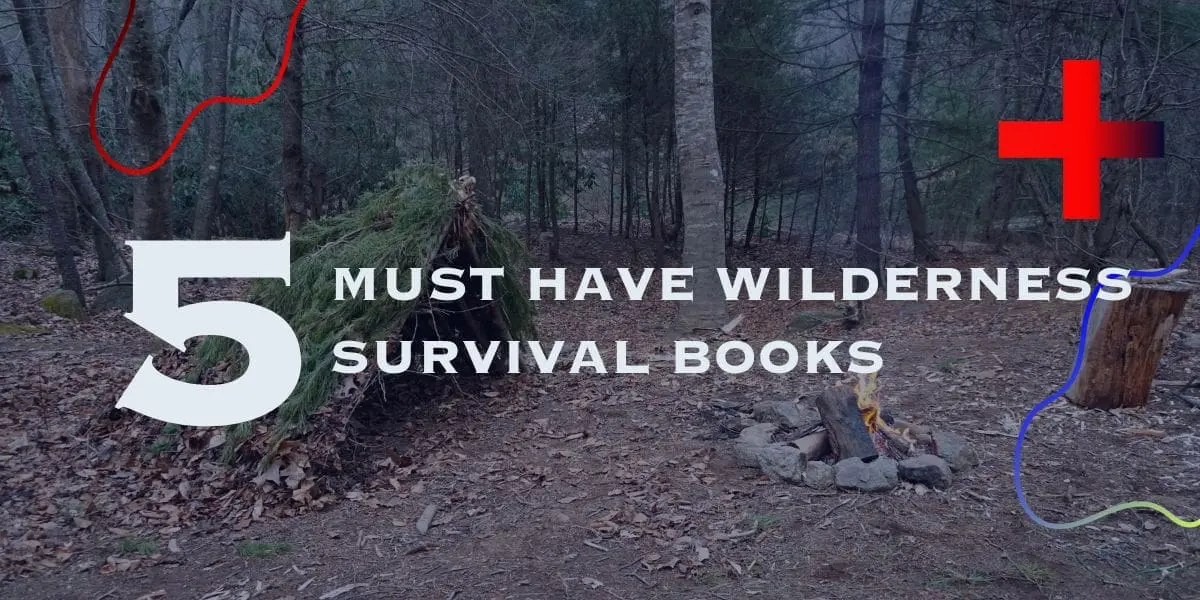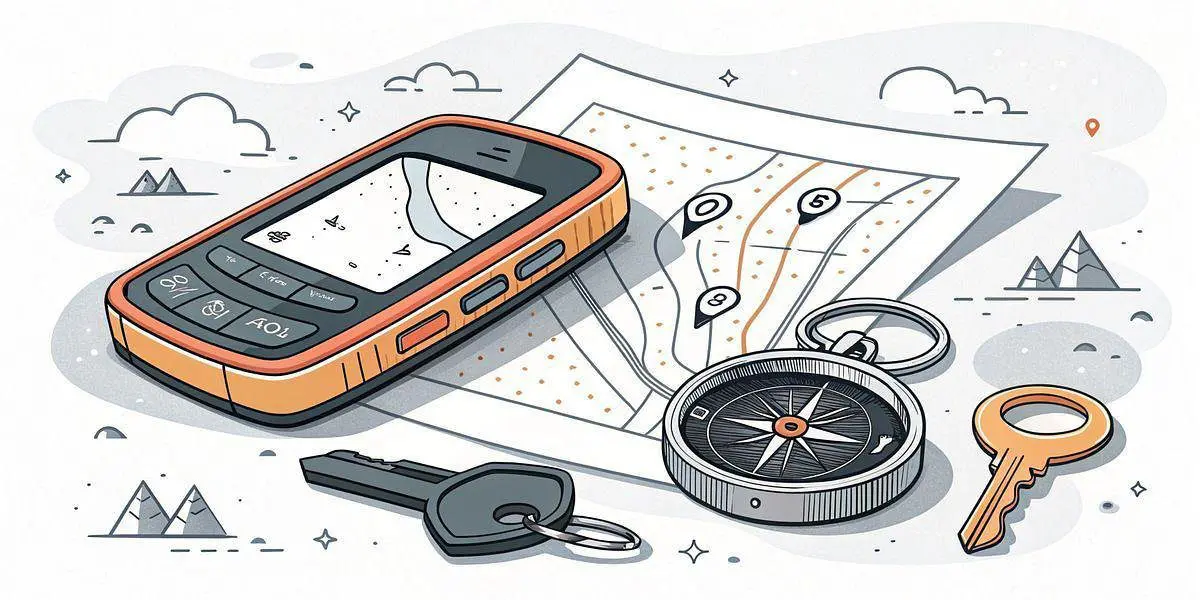Unfortunately, we never know when disaster may strike and put you and your loved ones in a survival situation. You may be highly prepared and ready to ride out the apocalypse at your house, but for some unforeseen reason have to immediately evacuate. Even if the event is not necessarily a survival-specific situation the significant inconvenience of being dislocated with little or no notice can be a miserable experience without an emergency kit. Understanding that sometimes fate just deals us a bad hand, it only makes sense that we pre-emptively have a plan in place to help mitigate old Murphy’s attempt at knocking us down.
In this article, we’re going to do just that by helping you to create a 72 Hour Evacuation Kit for your family. This emergency kit is not to be the commonly referenced Bug Out Bag (BOB). As typically when we hear Bug Out Bag we think of a single bag, in the case of this article it’s going to be a little different as we are focused on an entire family. So I guess BOK (Bug Out Kit) would be more appropriate if we must designate an acronym.
Amazon Disclaimer: We provide affiliate links to amazon products when appropriate to the content discussed. These links help to fund our effort to bring quality information to the Modern Warrior Project community.
A quick note before we move into the meat of the article. Since this is being written for a general audience I have to be broad in some areas and will do just that. I encourage you to go along with the general guidance of this plan, and once complete and established, reevaluate it and see where you can improve and better tailor it for your family.
For clarity, this kit is a prepositioned kit (I have most of mine in my garage) and is able to be quickly loaded for evacuation purposes. For instance, I have an RV bug-out plan, but also a single vehicle, as well as a non-vehicle plan. Each is tailored down to the ideal kit that I can fit with the platform I’m stuck with. Keep in mind that if doing as we recommend you also have a kit that remains in your vehicle at all times. There will be some redundancy between these kits, and that is fine. After all Two is One and One is None isn’t a bad motto to live by. Even so, these redundancies can be cut if budgeting and space require it. At a minimum, I encourage you to look at your kit after all assembled and establish a drop list of the items you will have to forfeit if your family is forced to move out on foot. It’s a lot better (as with all things prepping) to have already determined this answer rather than doing so under the pressure of a time crunch.

Water
Water is a critical necessity and depending on the environment one could feasibly die from lack of it within a three-day period (Survival Rule of 3). While this list isn’t in any specific order I do think for that reason water is a great place to start. As a rule, you want 1 gallon of water per person (and pet) per day. So a family of four with a dog would need 15 Gallons for their Evacuation Kit. For my family, I actually surpass this a little as I have the room to do so. I use Waterbricks for this purpose as they stack well for movement allowing me to capitalize the packing space in the vehicle, much better than say 1-gallon jugs.
Remember this list is based on the premise that you are evacuating via a vehicle. I do not pack this much or even close for an on-foot evacuation, but rather rely on portable filters like Lifestraw and Sawyer. In our case, we carry one Lifestraw Family Filter for the group as well as an individual Sawyer Filter each. I also carry a small bottle of water purification tablets in my BOB. In all honesty, this is a bit redundant, but I fully admit to being redundant. The Family Filter is also on my cut list if I need room or to drop weight for some reason (more so room as it is really light). Regardless, in a vehicle evacuation, I always recommend having a water filter as well as the water.
Food
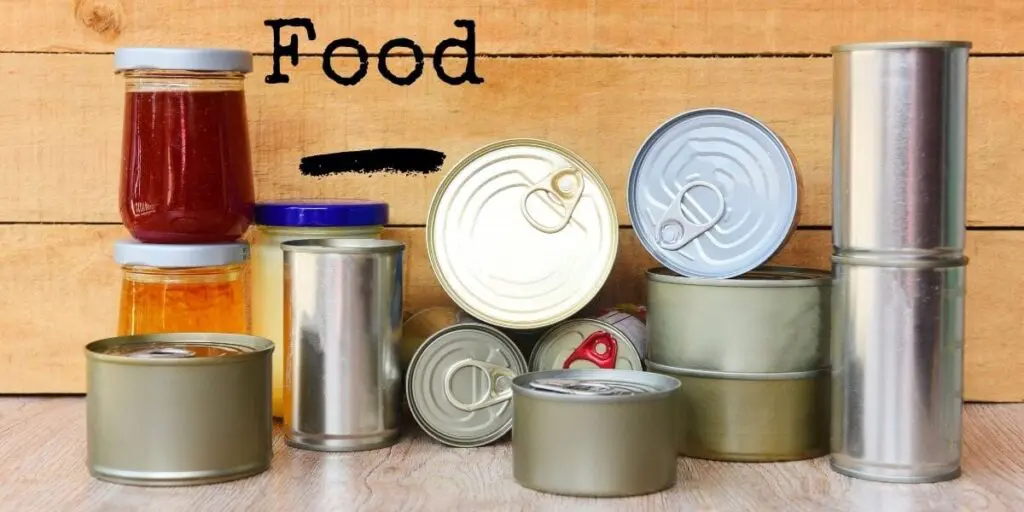
In the area of food, you also want a three-day supply. Moving in a vehicle allows you some good flexibility here. Ideally, you want to pack some stuff your family will enjoy and are used to eating. Try and make it easy preparation preferably no cooking required. Canned goods are great for this. Don’t forget to pack a manual can opener. To figure out the amount needed you can do so by calories. There is a fair amount of fluctuation between young to old, male to female, etc with the caloric requirement estimates, but I have found that simply estimating 2000 per person per day tends to average out pretty well. It’s ok to use our general knowledge of our family as well. I would say most moms or dads can generally estimate what their kids will eat in a day. The good news here is that you can easily live without food for 3 days so it’s not critical to be precise.
If able err on the side or more so as to minimize discomfort in an already stressful time. For my family’s foot movement kit, we pack Jerky, High-Calorie dense Bars, and miscellaneous personal treats (say a couple of pieces of hard candy or the like). I also like to pack some Runners Gel packets as well. These are for that extra burst of energy if needed, and I’m a huge fan of them. If you have pets don’t forget them here either. The same rule applies, pack three days’ worth of food for them.
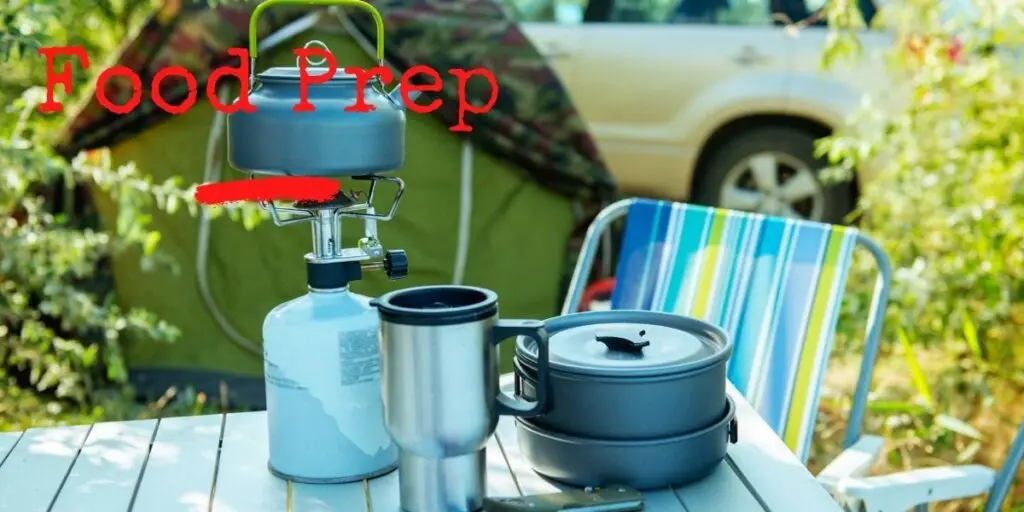
Preparation, Serving, and Cooking Supplies
I encourage minimizing in this area as for the most part a lot of these are niceties rather than critical. Nonetheless, make sure you have the appropriate supplies to prepare and serve the food choices you choose to take along. Our family packs a compact camping-style dish set. At a minimum, I encourage a good pot and individual eating utensils per person like this Titanium Spork, or an item similar. I also recommend that each individual pack has a steel cup with a handle capable of being heated over a fire as this allows for an additional water boiling source and general liquid heating container.
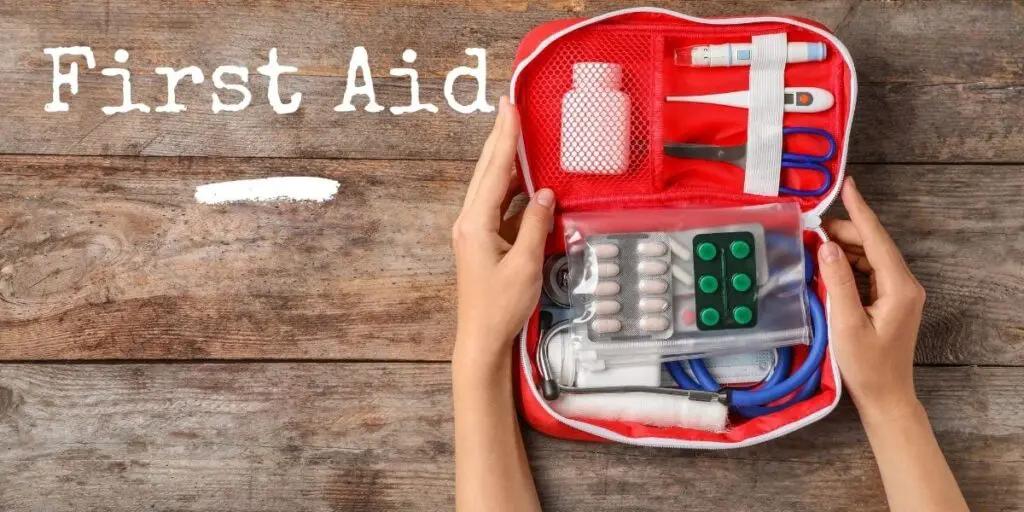
First Aid
Medical Supplies is another area of a potentially critical resource to ensure you have. In the case of a 3-day family survival kit, I would actually place its priority higher than food. Having the benefit of vehicle travel allows you to freedom for a fairly robust kit. My recommendation here is to go for a good quality first responder trauma kit. You can do some research and piece together your own kit by buying individual supplies, or buy a prebuilt kit such as the First Aid Only 520-FR kit which should well accommodate a family’s needs.
Also, ensure you get some basic first aid training and have adequate literature to reference for the supplies you do carry. Beyond this, each individual should have an individual first aid kit on their person as well. For our walking plan, the rest of the family carry a basic IFAK (Individual First Aid Kit), and I carry a beefed-up, but easily transported kit for some of the broader requirements we may encounter. You may wonder why have young children carry an IFAK as they may be too young to effectively employ it. The intent here is they are carrying it for their needs, not necessarily for their ability to use it. Of course, you do have to take the age of the child and physical ability into consideration when packing their bags, and as such their IFAK’s are built respectively with that in mind.
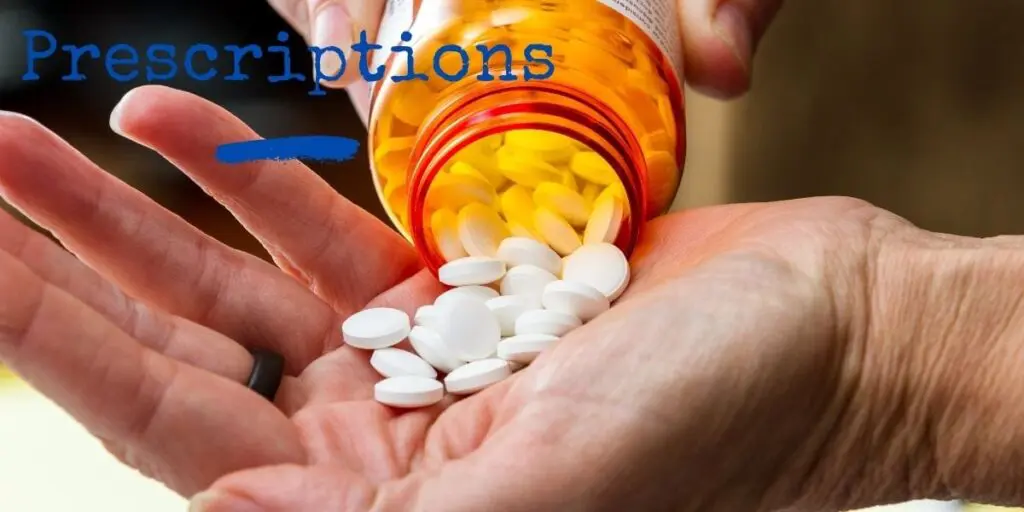
Prescriptions and Other Special Items
Since we just covered First Aid supplies I thought prescriptions and special items would be good to go ahead and throw in now. In this area, you want to consider individual specific needs that are important to meet even in an emergency situation. These aren’t so much niceties as individual necessities. Prescription items are the first to consider. This could be medications, glasses, dental wear, orthopedic footwear, CPAP, or whatever. If it is prescribed it should probably be packed, but at a minimum, it should be deliberately considered and weighed in on whether it is necessary for a short-term evacuation.
To avoid creating another category all together I’m going to also throw infants in here…well not actually the infant themselves, but their specialty items 🙂 . Diapers, Baby Wipes, Formula, etc.. as well as any other potential special needs for family members should be considered and added as necessary under this category.
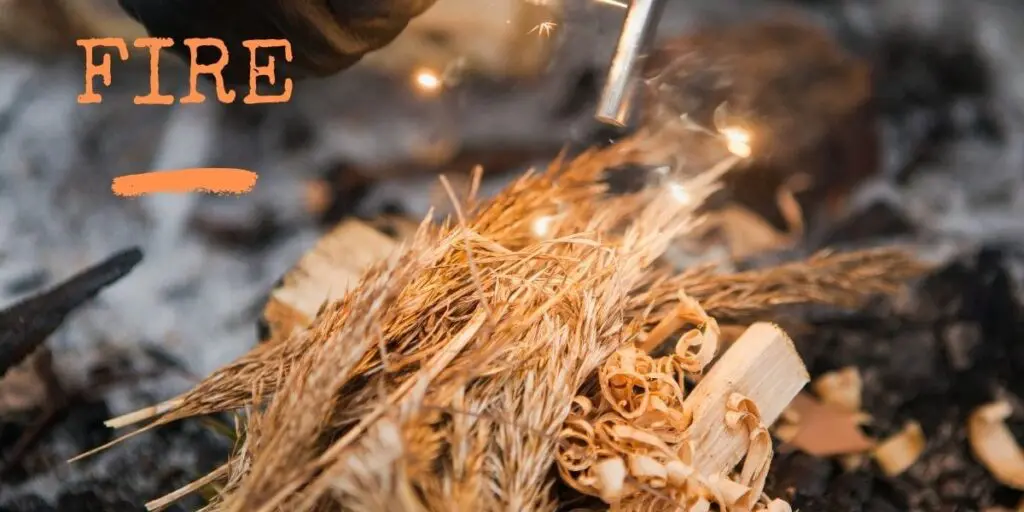
Fire
A fire has numerous potential survival uses. You may need it for heat, cooking, signal, or a number of other potential reasons. If and when you do need it you want to be able to quickly and effectively start one. For this reason, I recommend putting together a small fire Kit. The kit should include a few ways to ignite the fire (matches, Ferro rod, survival lighter, magnesium bar, etc..), some starter fuel such as vaseline-soaked cotton balls, charcloth, or other combustible material. A few little strips of Fatwood are always great as well. If room permits it you can certainly even have a small fire starter log as well.
You can of course buy premade fire kits and various tinders and the like. There is nothing wrong with this route, but I always like to encourage students to learn to make and gather their own as it is not that hard to do, can save you some money, and in general, is a good self-reliant skill to have. You should certainly develop the skills now to identify and acquire the necessary ingredients for a fire in the wild as it is not reasonable to pack firewood for an evacuation journey and completely unnecessary with just a little practice in fire craft.
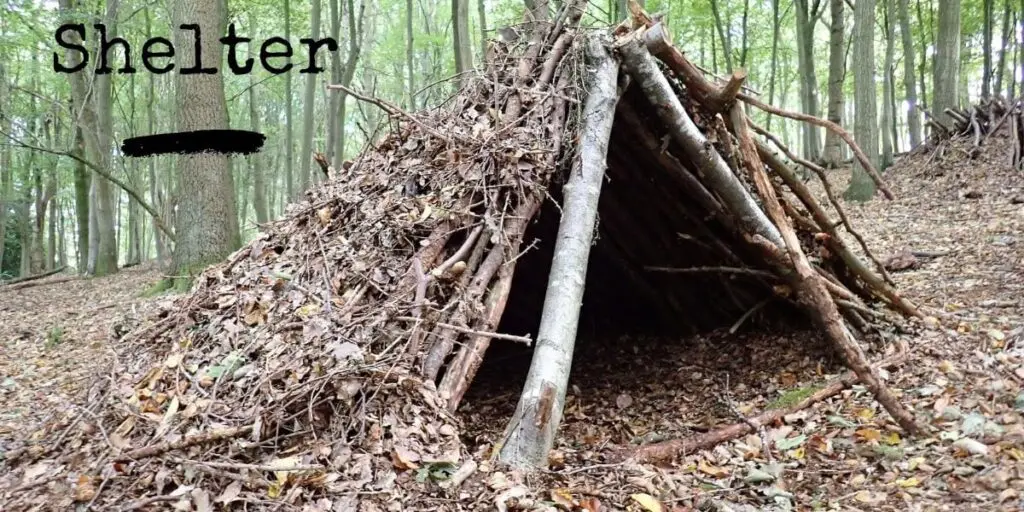
Shelter
Our primary shelter option is the RV. Even so, I also keep a ” data-lasso-id=”5482″>family-sized tent in our deployment kit to allow an expedient (and comfortable) shelter if needed. Our personal bags cover shelter from a more
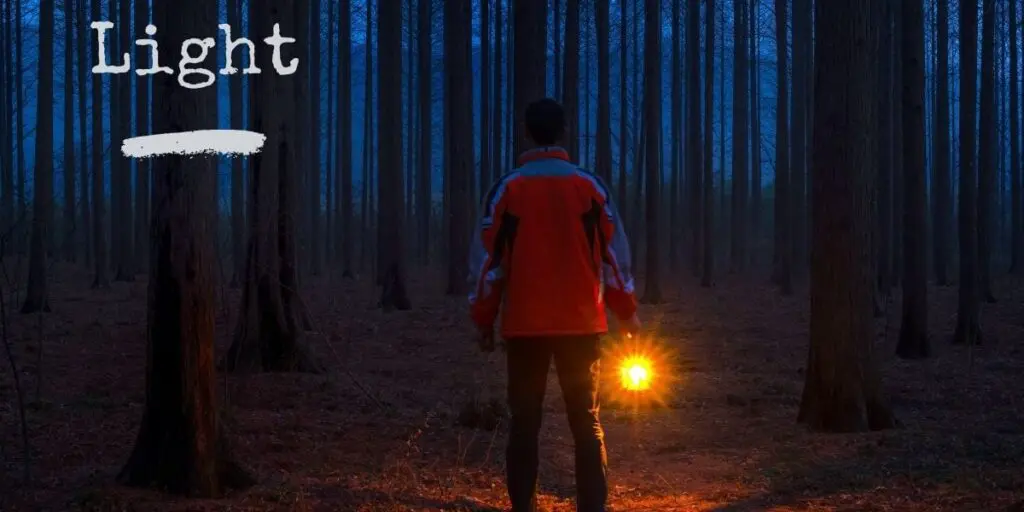
Light
Light is a great topic to follow fire, because if needed fire can be used for it. For that reason, I recommend throwing a small long burning candle or two in your kit. Additionally, though you want each individual to have a headlamp as these are great hands-free light sources and take hardly any space at all. I also pack a couple of portable LED work lights for general use and area lighting. I like these because they are small, have great battery life, and provide an abundance of area lighting. If able elect for some of your lights to allow for multi power sources such as 12v (car battery). Don’t forget to pack spare batteries appropriate for your packed choices.
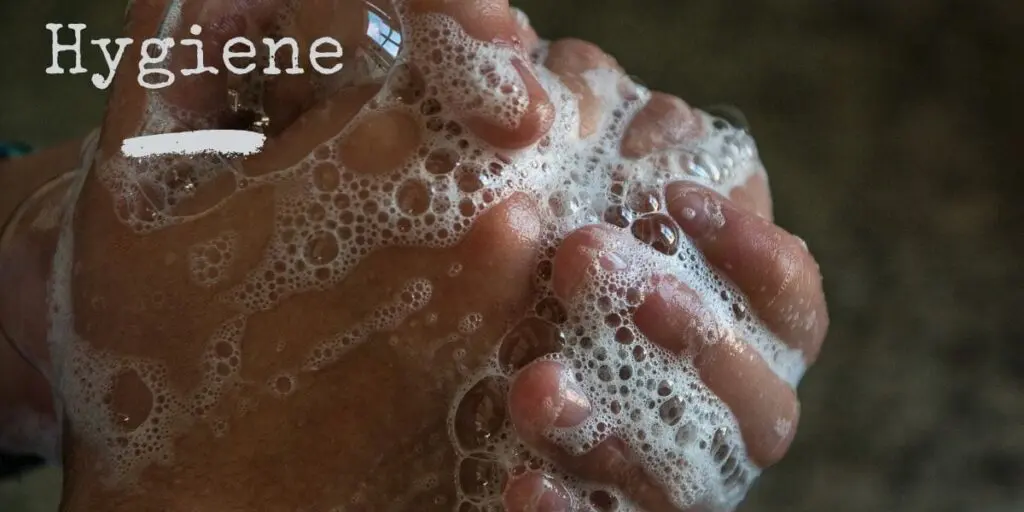
Hygiene
Apocalypse or not, you don’t want to be known as the dirty kid on the block, do you? Of course not, so let’s talk hygiene products. Pack light, but pack right. Make sure to cover all the basics. Consider a daily cleaning routine and go from there. You need the ability to clean your hair, skin, and mouth. Also, consider any appropriate feminine sanitary products that may be needed. While I do pack some lightweight washcloths and towels, I also incorporate prepackaged items that don’t require additional water to work. Think Baby/Body Wipes, Hand Sanitizer, etc. For our family, each individual has personal hygiene items on their person in addition to our Family Emergency Kit.
Of course, one other item you don’t want to forget here is toilet paper or a substitute such as a personal bidet. If your room allows it you may want to consider packing along a portable camp toilet. I personally don’t as I don’t consider it important, though we do have a bathroom in our RV. To my thinking it’s just not worth the weight or effort in an evacuation event to carry along when if needed a simple cathole can be dug. Small spade shovels are good to throw into the kit for this purpose. What we do carry however are portable urinals. This is so urinating can be done without stopping. They take very little room and come in very handy, especially if traveling with younger children.
Finally, I’m going to throw trash bags into the list here. In reality, they can fit into a number of sections throughout our emergency kit and are one of the more versatile pieces of gear you can easily add. I recommend a box of 55-gallon durable trash bags for the kit.
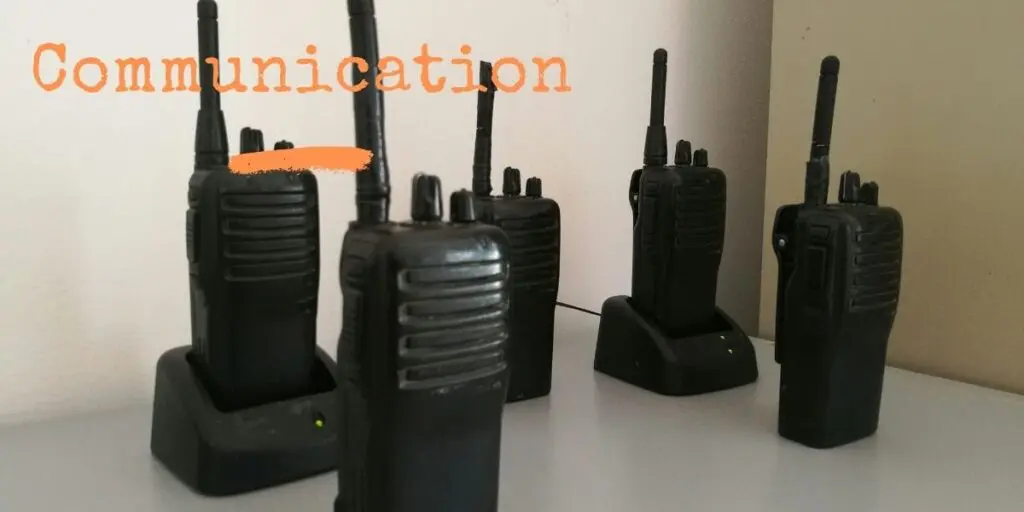
For those looking for more detailed information on creating a compact and affordable hygiene kit for your bug out bag, I highly recommend checking out this comprehensive guide on the world’s smallest bugout bag hygiene pack.
Communication
Communication is one area I feel a lot of 72-hour kit plans out there are somewhat lacking in the suggested items area. Cell phones are pretty much a given as most people don’t leave home without them now during good times. They are an excellent resource in general not only for communication but for a myriad of other useful resources and apps that they can provide access to.
Portable radios. I have portable radios for every member of the family. I don’t often see these make the list, but I find them extremely useful in general for family trips where we are separated for various activities (think large park). In reality, it is not likely that my youngest children would have the need for them, but I enjoy the safety backstop of knowing they have them available if for some reason they were separated. Ham Radio and CB Radio. My personal BOB has a Ham radio and our RV also has a CB Radio installed. These both provide a great further-reaching communication ability.
Whistles. Each family member has a Fox 40 whistle in their personal BOB. A whistle can provide an excellent very audible emergency signaling device if you’re in trouble or lost. In my personal bag, I also carry a burner phone with quite a few burner SIM cards as well. Finally, my youngest children also have cheap electronic pull alarms on their personal bags as well. If your budget allows it I would throw a SATCOM phone (the phones are expensive, but the service is the real cost) in there somewhere as well. Mine doesn’t but if yours does go for it.
Outside of our internal communication, we want to allow the ability to signal if for some reason you end up stranded or in distress. There are a number of ways to meet this goal such as signaling flares, VS-17 panels, Chemlights, signaling mirrors, Strobe lights, and more. For our Family Kit, I pack a VS-17 Panel, Chemlights/550 Cord (Buzzsaw), and Signaling Flare gun with flares.
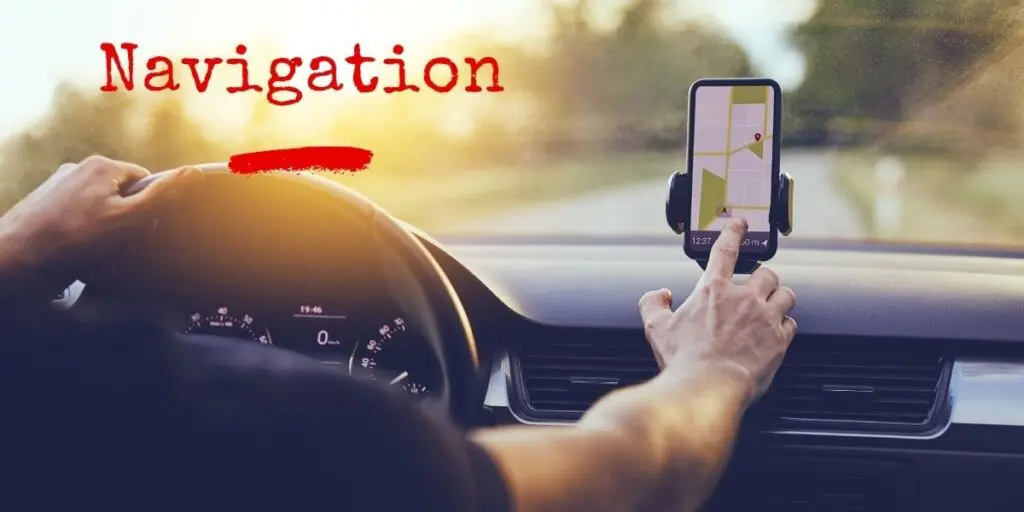
Navigation
In our current era of technology, there is an inclination to take this area for granted. The vast majority of navigation I do is done with my cellular phone. I don’t see anything wrong with that being your primary choice, but it shouldn’t be a one-stop fail solution. For our family kit, I have a nice RV GPS, I also have a large supply of state maps as well as a national atlas available. Note as with the rest of this list this doesn’t include personal carried items that cover areas more specific to land navigation by walking.
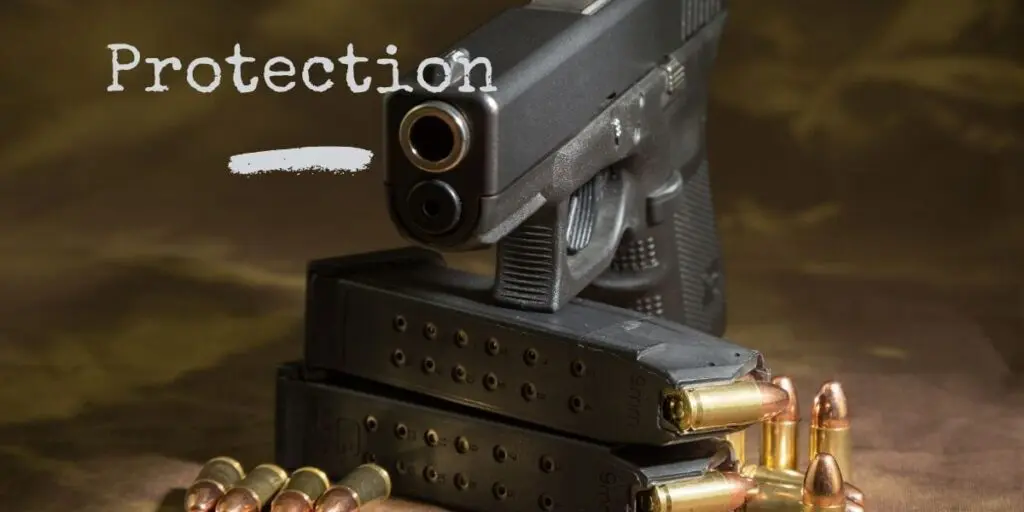
Protection
The area of protection should always be a consideration. An excellent form of protection for a household as well as an emergency evacuation is a family dog. Ideally a well-trained guard dog, but even a small dog can act as a good early warning for potential intruders or visitors if you are in an isolated location. Firearms are a given here along with an adequate supply of ammunition for them. I won’t go into personal load-outs here other than to say they are distributed across my family members in a way I consider ideal. In the case of the 3 Day Emergency Kit I plus up considerably due to having the extra room. I’ll leave this area to personal preference and decision, but for me, I concentrate on having a wide means of capability with what I take as well as a surplus of ammunition. I consider these items to be valuable trade/sell items as well so they hold a high priority in space consideration for me. Bear spray is another excellent addition to the kit as it can serve well against a four-legged intruder if needed.
For our family, I also have soft armor vests (LVL III) for each family member as well as interior soft and hard armor for quick emplacement in the chosen vehicle. I do recognize that for 99% of the situations this is not necessary. I unashamedly have it for the other 1%. Our family kit also contains some various style personal restraint devices in case there is a need to restrain an encountered advesary. Since this article is based on a Family kit I won’t dive into the individual personal kit and bags here, but rather save them for their respective articles. I will add though that there are some other personal items carried that fit into this category.
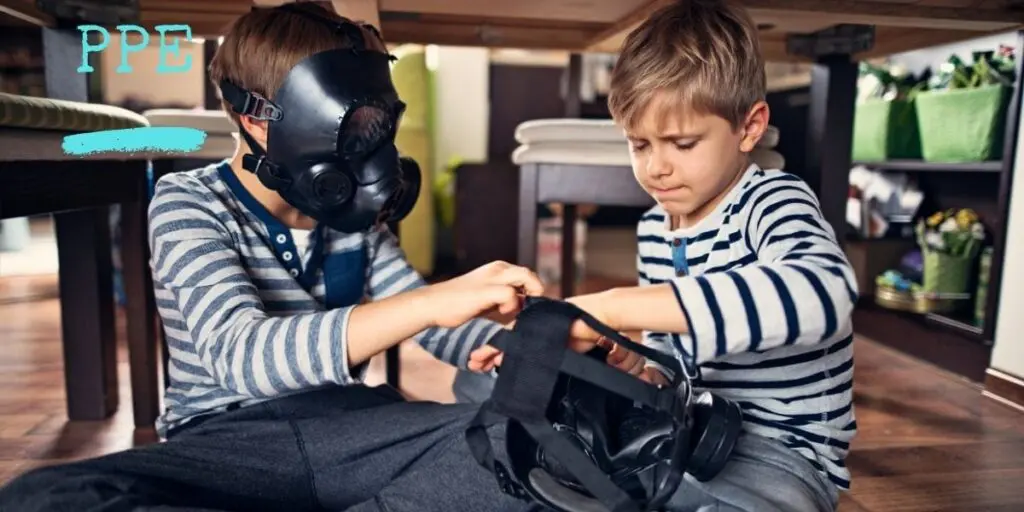
Personal Protective Equipment (PPE)
I treat this one somewhat a little different than the rest as it really is considered on a situational basis as to whether it gets loaded. I have a loadout kit (in a Pelican Case) for the family that contains NBC suits, Gas Masks, Spare filters, Radiation Detector, some canteens (to be used while wearing a mask), Potassium Iodide (thyroid Blocker), and a few other odds and ins. If the particular emergency calls for it then this kit obviously makes the list. If it doesn’t then it falls very low on the priority. Beyond the separate NBC gear, I also have Tyvek Suits, Rain Gear, disposable medical gloves, and extra N95 Masks. Note this is a family kit and separate from PPE on our personal kit.
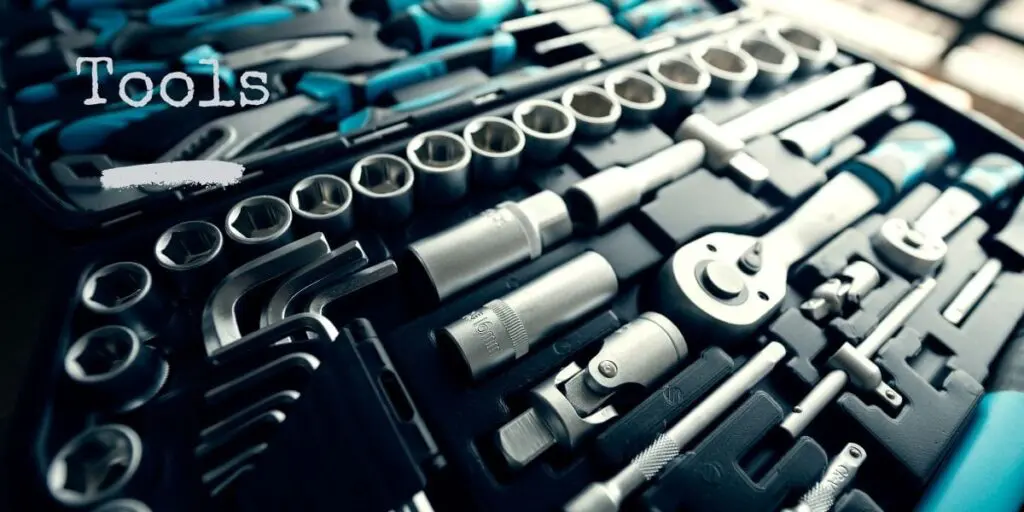
Tools
I keep a few dedicated toolboxes for this. These are actually the same ones I use when traveling in the RV in general. The intent here is to have a wide variety of tools that will cover most foreseeable issues, built into a compact kit. One of those toolboxes is dedicated to miscellaneous supplies that may come in handy such as 550 Cord, bungees, duct tape, zip ties, etc. I also carry a pic ax and short shovel as well.
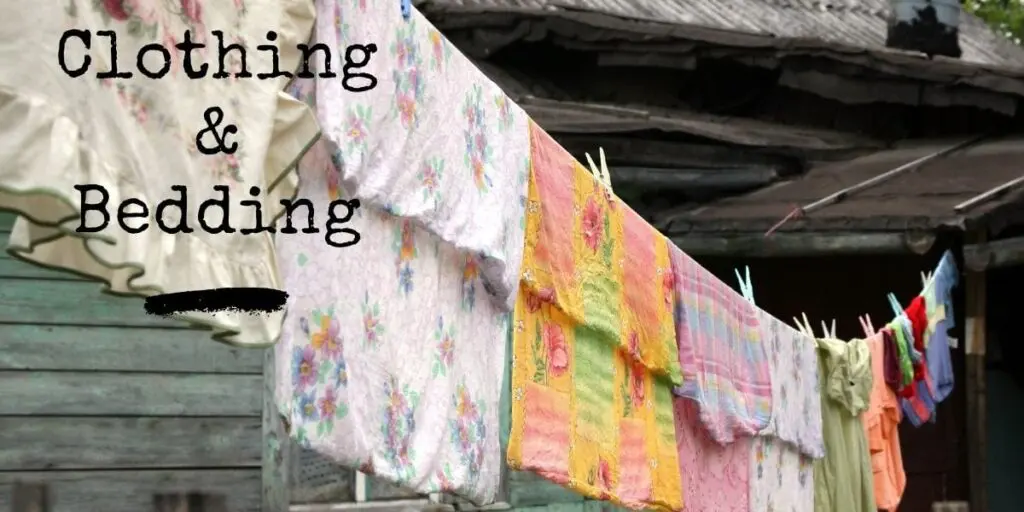
Clothing and Bedding
This area is a little unique in that I don’t have it all prepacked. I do have some of it such as bedding and pillows, but clothing would need to be gathered during the disaster evacuation. The actual right answer would be to have a few sets of clothes along with plenty of spare socks and underwear prepacked in your evacuation kit. These items should be reviewed and cycled every month or so, but I just don’t do it and I’m not going to bother and lie to you here and say I do. Who knows, maybe I’ll fix that. I do have some that stay in my personal BOB so I’m not completely ate up on this. Either way at a minimum you should have a broad list of what to grab for the evacuation as well as a suitable container already in the wait for it.
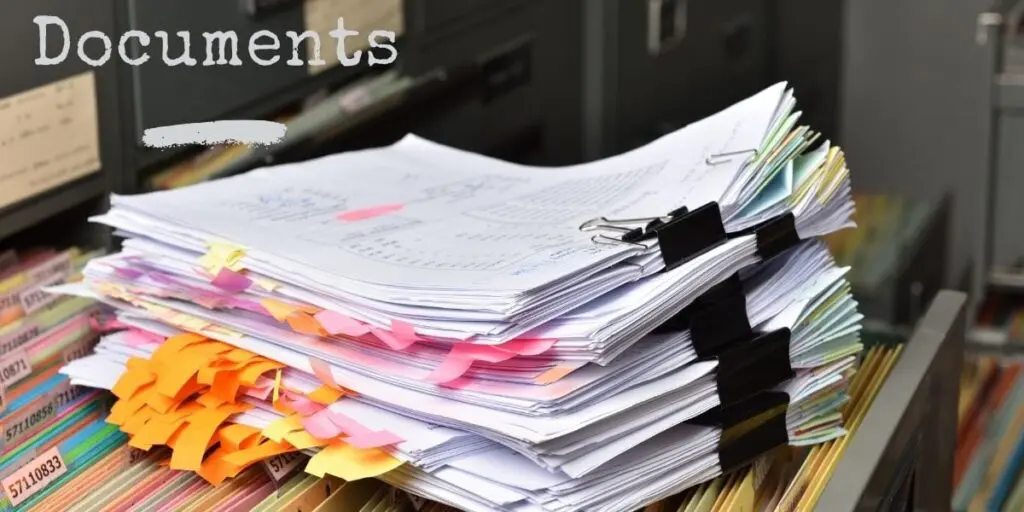
Important Documents
You should have all your most important documents ready to go in the event of an evacuation. Birth Certificates, identification cards, bonds, copy of credit cards, etc. I keep these items in a small safe and have them separated from other important documents that I don’t consider critical to take. This allows me to quickly grab them for the move.
Additionally, I keep a collection of all important documents on a few duplicated encrypted USB Drives spread across family members. Ideally, a small fireproof box is a great transporter for these items, but I would keep a flexible folder readily available so that it is easy to transfer to a Bug out Bag if you have to move on foot. You don’t really want to tote around a hard fireproof case for the walk. Here I’ll also note that I recommend having all of these items backed up on a secure cloud server as well. While that is not really part of the kit, it serves the same intent.

Financial Security
For our family this actually all is loaded into our survival backpacks, however, I didn’t want to completely ignore it here just in case you only elect for a family kit. You want to have some cash on hand, preferably in smaller denominations to allow you flexibility in spending it. I also take a reasonable amount of precious metals along as well. This can be in the form of jewelry or coins. Make sure you spread this loot across the family so that no single issue (theft, loss, etc..) could cause you to lose it all in one go. I also carry in my bag a cryptocurrency hardware wallet which I encourage for a number of reasons, but they are beyond the scope of this article for discussion. The two things I do have in the family kit that isn’t on our person are a diamond tester and a counterfeit pen. I don’t want to haul this on a foot march, but it is small enough and gives enough value that it makes it in the vehicle plan.

Entertainment
A multipowered radio should be included in your kit. This serves as both informational and entertainment. I have and personally like the American Red Cross Emergency NOAA Weather Radio. It’s also a good idea to throw some small age-appropriate games that fit your family, as well as a pack of playing cards. If you have really young ones I like to throw some coloring books and crayons in as well.

Power for your Emergency Kit
If you have the room it’s ideal to pack a small but powerful generator into your kit. Throw an inverter or two in that will allow you the ability to get 110ac off of your vehicle battery power. You also want to ensure you have plenty of spare batteries and a few strong battery charger packs for your electronic devices. Multi-powered battery packs are ideal as they allow you a lot of versatility with recharging them. Consider adding some that even accept solar recharging for the most diversity.
Final Discussion on the Emergency Kit
If you follow the intent of this list you should be well prepared to evacuate your family not only safely, but with a measure of comfort should a disaster befall you. If you’re starting from scratch start slowly and steadily work to get to the perfect plan for your family. In fact, if you are truly starting from scratch with little to no gear currently owned I generally recommend buying a premade kit like this one. It doesn’t cover everything we do here, but it is a relatively cheap and fast way to get a basic setup in place. From there you can really build it all out. It doesn’t come overnight, but with a little time and persistence, you’ll be there before you know it.
One final thing to note here. This list is geared at getting your family out fast and with enough on your person so to speak to handle any issues until you can get to a stable location. Keep in mind that you may never come back to what you leave (eg. a Hurricane destroys your property and all remaining belongings). Understanding that I also recommend a secondary list of desirables that can make the journey. These will be items that you hate to lose (ie. great-grandmothers glass eye) but aren’t a necessity. If the journey and time allow you to gather and take them with you then great! But these additional items are also the first level of reduction in supplies if the scenario dictates it.

